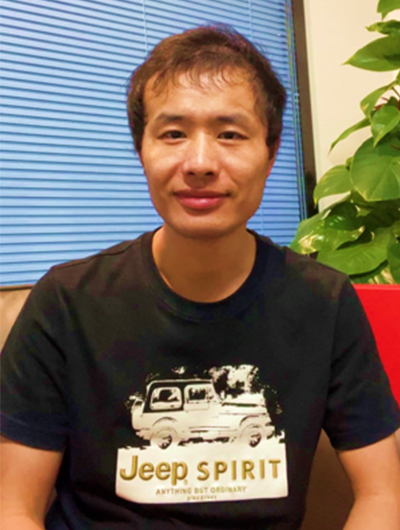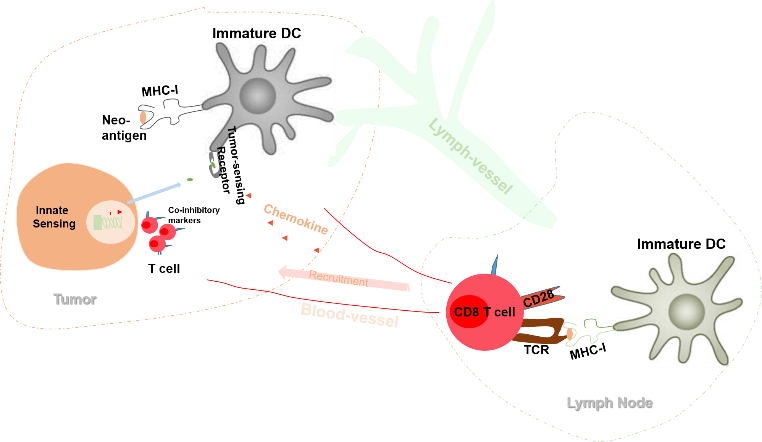
Lu, Changzheng
卢长征
Institute of Cancer Research
Junior Principal Investigator
Changzheng.lu@szbl.ac.cn
Timeline
-
2022 – Present
Shenzhen Bay Laboratory Junior Principal Investigator
-
2016 – 2022
UT Southwestern Medical Center Postdoc
-
2009 – 2016
Institute of Biophysics, CAS PhD
-
2005 – 2009
Jiangnan University Bachelor
Research Areas
Lu lab focuses on the mechanisms of infiltration, survival and exhaustion of T cells in tumor microenvironment, aiming to 1) develop pharmacological intervention to enhance anti-cancer immunotherapies; 2) design novel tumor vaccines.
Highlights
Dr. Lu started tumor immunology research in his PhD program when he took a collaborated project of developing innovative immunotherapies with Drs Yongjun Liu and Lixin Li from Seven & Eight Biopharma. Currently, the project has entered phase II clinical trial in US. During his postdoc training, one of Dr Lu’s work has been published as two research articles back-on-back in Cancer Cell, which discovers the mechanisms of responsiveness and non-responsiveness in anti-PD1 therapy against dMMR tumor and reveals the key role of tumor cells-intrinsic cGAS-STING pathway in the tumor-infiltrating of T cells. This work is highly evaluated by the scientific community, especially by Professors Andrés Cervantes (president of ESMO) and Alberto Bardelli ( president of EACR), and elected as “EACR TOP 10 Cancer Research Publications” in 2020.

Honors
• EACR Top 10 Cancer Research Publications in 2020
• Merit Student of 2013/2014 and 2009/2010 school years in the Institute of Biophysics, Chinese Academy of Sciences
• Excellent Student Cadre of 2009/2010 school year in Graduate University of Chinese Academy of Sciences
Selected Publications
1. Huang, Y.#, Lu, C.#, Wang, H., ... & Li, G. M. (2023). DNAJA2 deficiency activates cGAS-STING pathway via the induction of aberrant mitosis and chromosome instability. Nature Communications,14(1):5246.
2. Cai, Y., Zhang, A., Lu, C.*. (2022). Precision intervention of cell type-specific targeting is required for future cancer immunotherapy. Medical Review, 2(6), 553-554.
3. Lu, C.#, Guan, J.#, Lu, S., Jin, Q., Rousseau, B., Lu, T., ... & Fu, Y. X. (2021). DNA sensing in mismatch repair-deficient tumor cells is essential for anti-tumor immunity. Cancer Cell, 39(1), 96-108.
This paper is previewed by Cancer Cell (https://www.cell.com/cancer-cell/fulltext/S1535-6108(20)30664-4); Elected as EACR’s Top 10 Cancer Research Publications in 2020; A highly cited paper in Web of Science.
4. Guan, J.#, Lu, C.#, Jin, Q., Lu, H., Chen, X., Tian, L., ... & Li, G. M. (2021). MLH1 deficiency-triggered DNA hyperexcision by exonuclease 1 activates the cGAS-STING pathway. Cancer Cell, 39(1), 109-121. A highly cited paper in Web of Science.
5. Liu, L., Chen, J., Zhang, H., Ye, J., Moore, C., Lu, C., Fang, Y., Fu, Y. X., & Li, B. (2022). Concurrent delivery of immune checkpoint blockade modulates T cell dynamics to enhance neoantigen vaccine-generated antitumor immunity. Nature cancer, 3(4), 437–452.
6. Zhang, A., Ren, Z., Tseng, K. F., Liu, X., Li, H., Lu, C., Cai, Y., Minna, J. D., & Fu, Y. X. (2021). Dual targeting of CTLA-4 and CD47 on Treg cells promotes immunity against solid tumors. Science translational medicine, 13(605), eabg8693.
7. Li, H. D., Lu, C., Zhang, H., Hu, Q., Zhang, J., Cuevas, I. C., Sahoo, S. S., Aguilar, M., Maurais, E. G., Zhang, S., Wang, X., Akbay, E. A., Li, G. M., Li, B., Koduru, P., Ly, P., Fu, Y. X., & Castrillon, D. H. (2020). A PoleP286R mouse model of endometrial cancer recapitulates high mutational burden and immunotherapy response. JCI insight, 5(14), e138829.
8. Han, C., Liu, Z., Zhang, Y., Shen, A., Dong, C., Zhang, A., Moore, C., Ren, Z., Lu, C., Cao, X., Zhang, C. L., Qiao, J., & Fu, Y. X. (2020). Tumor cells suppress radiation-induced immunity by hijacking caspase 9 signaling. Nature immunology, 21(5), 546–554.
9. Suresh, S., Chen, B., Zhu, J., Golden, R. J., Lu, C., Evers, B. M., Novaresi, N., Smith, B., Zhan, X., Schmid, V., Jun, S., Karacz, C. M., Peyton, M., Zhong, L., Wen, Z., Sathe, A. A., Xing, C., Behrens, C., Wistuba, I. I., Xiao, G., … O'Donnell, K. A. (2020). eIF5B drives integrated stress response-dependent translation of PD-L1 in lung cancer. Nature cancer, 1(5), 533–545.
10. Liu, Z., Han, C., Dong, C., Shen, A., Hsu, E., Ren, Z., Lu, C., Liu, L., Zhang, A., Timmerman, C., Pu, Y., Wang, Y., Chen, M., Qiao, J., & Fu, Y. X. (2019). Hypofractionated EGFR tyrosine kinase inhibitor limits tumor relapse through triggering innate and adaptive immunity. Science immunology, 4(38), eaav6473.
11. Li, H. D., Cuevas, I., Zhang, M., Lu, C., Alam, M. M., Fu, Y. X., You, M. J., Akbay, E. A., Zhang, H., & Castrillon, D. H. (2018). Polymerase-mediated ultramutagenesis in mice produces diverse cancers with high mutational load. The Journal of clinical investigation, 128(9), 4179–4191.












